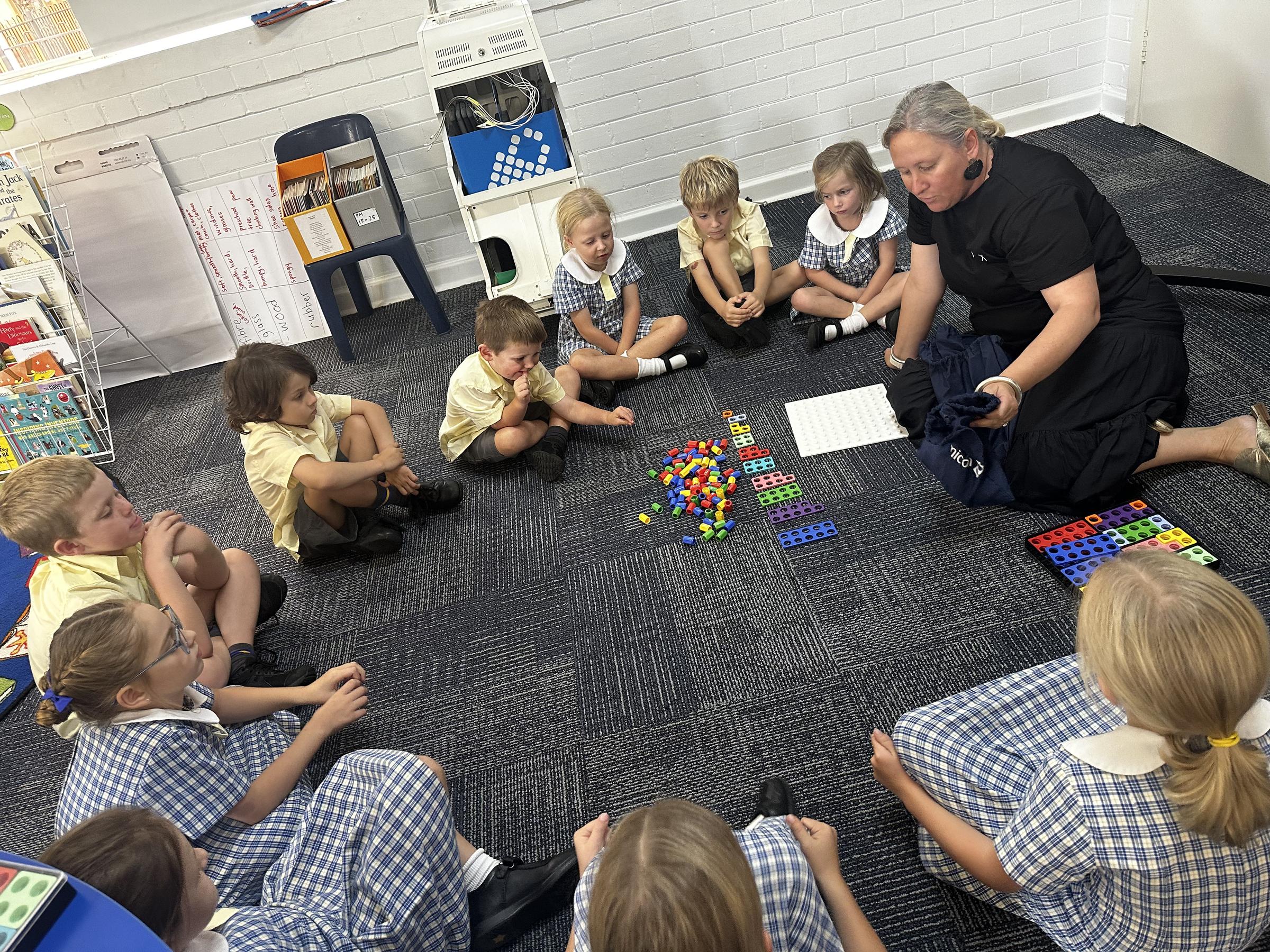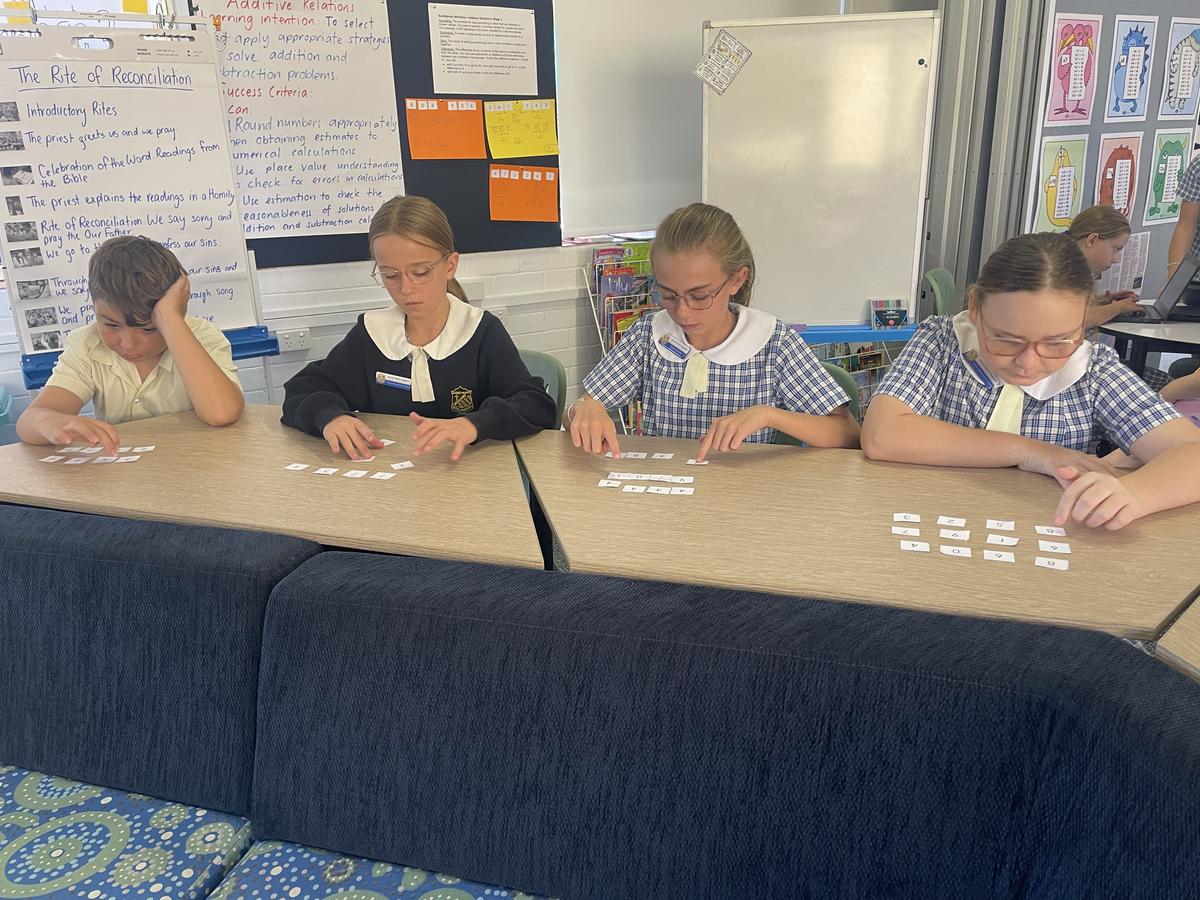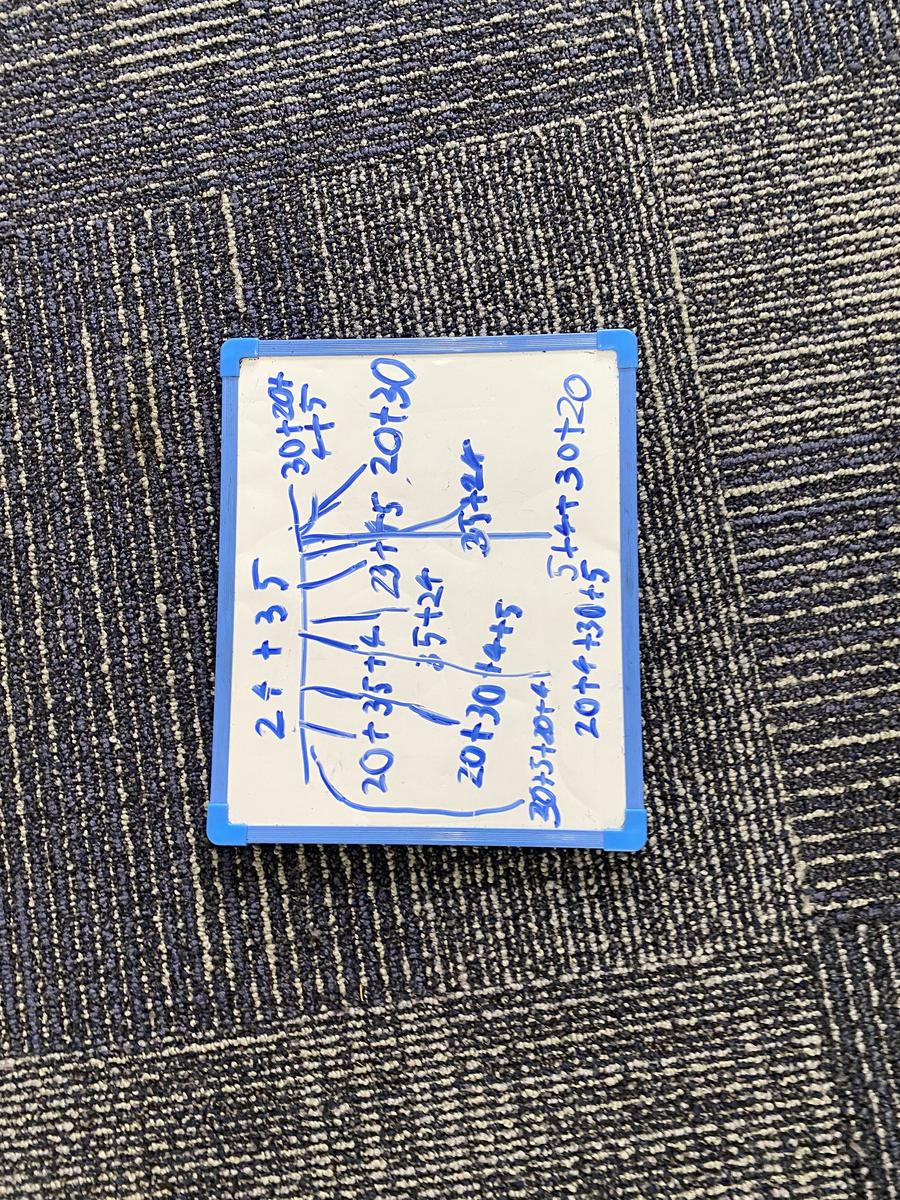Spotlight on the Classroom

Years 5 and 6
Over the last two weeks, Years 3-6 have been learning about Additive Relations. Developing a sense of the size of numbers with reference to tens and hundreds supports students in estimating answers. Rounding numbers to the nearest ten or hundred produces a way to test the reasonableness of a result.
Some ideas to start conversations about numbers with your child in the Primary classes are as follows:
Tips for parents:
Encourage Mental Math:
Help your child develop mental math skills by practising calculations in their head. For example, encourage them to break down problems into smaller, more manageable parts or use known facts to solve related problems.
Relate to Real-life Scenarios:
Connect math to everyday situations. Use real-life examples to show how addition and subtraction are used in daily activities like shopping, cooking, or dividing items among family members.
Parents should be aware of the following misconceptions and discuss them in the real-life context when they are identified:
- The child misapplies knowledge of whole numbers when reading decimals and ignores the decimal point. For example, the student reads the number 45.7 as “four fifty-seven” or “four hundred fifty-seven.”
- The child misapplies the procedure for rounding whole numbers when rounding decimals and rounds to the nearest ten instead of the nearest tenth, etc. For example, Round 3045.26 to the nearest tenth. The student responds, “3050” or “3050.26”
- The child misapplies rules for comparing whole numbers in decimal situations. For example, 0.058 > 0.21 because 58 > 21 OR 2.04 > 2.5 because it has more digits
- The child adds or subtracts without considering place value or starting at the right as with whole numbers. For example, 4.15 + 0.1 = 34.16 or 12 – 0.1 = 11
- The child misunderstands the use of zero as a placeholder. For example, 1.5 is the same as 1.05
- The child thinks decimals with more digits are smaller because tenths are bigger than hundredths and thousandths. For example, .845 is smaller than .5
Years 3 and 4
Students have been selecting and using mental and written strategies for addition and subtraction involving 2- and 3-digit numbers.
Another focus has been completing number sentences involving addition and subtraction by finding missing values.
Tips for parents:
Continually reinforcing the concept of addition in the real world is extremely beneficial to student learning and understanding. Adding totals at the supermarket, in the shed or collating minutes on a device are all examples of practising the skill.






